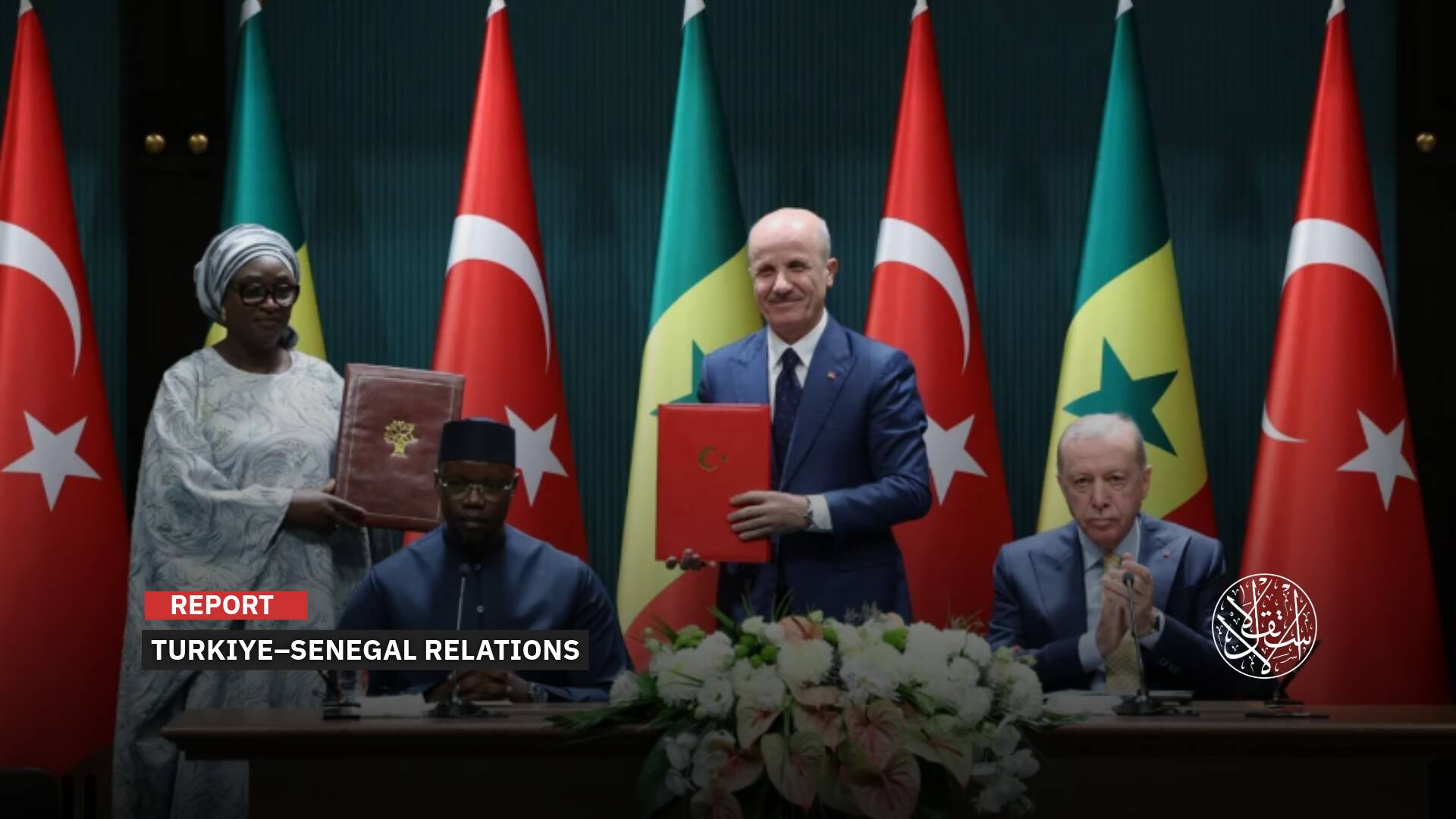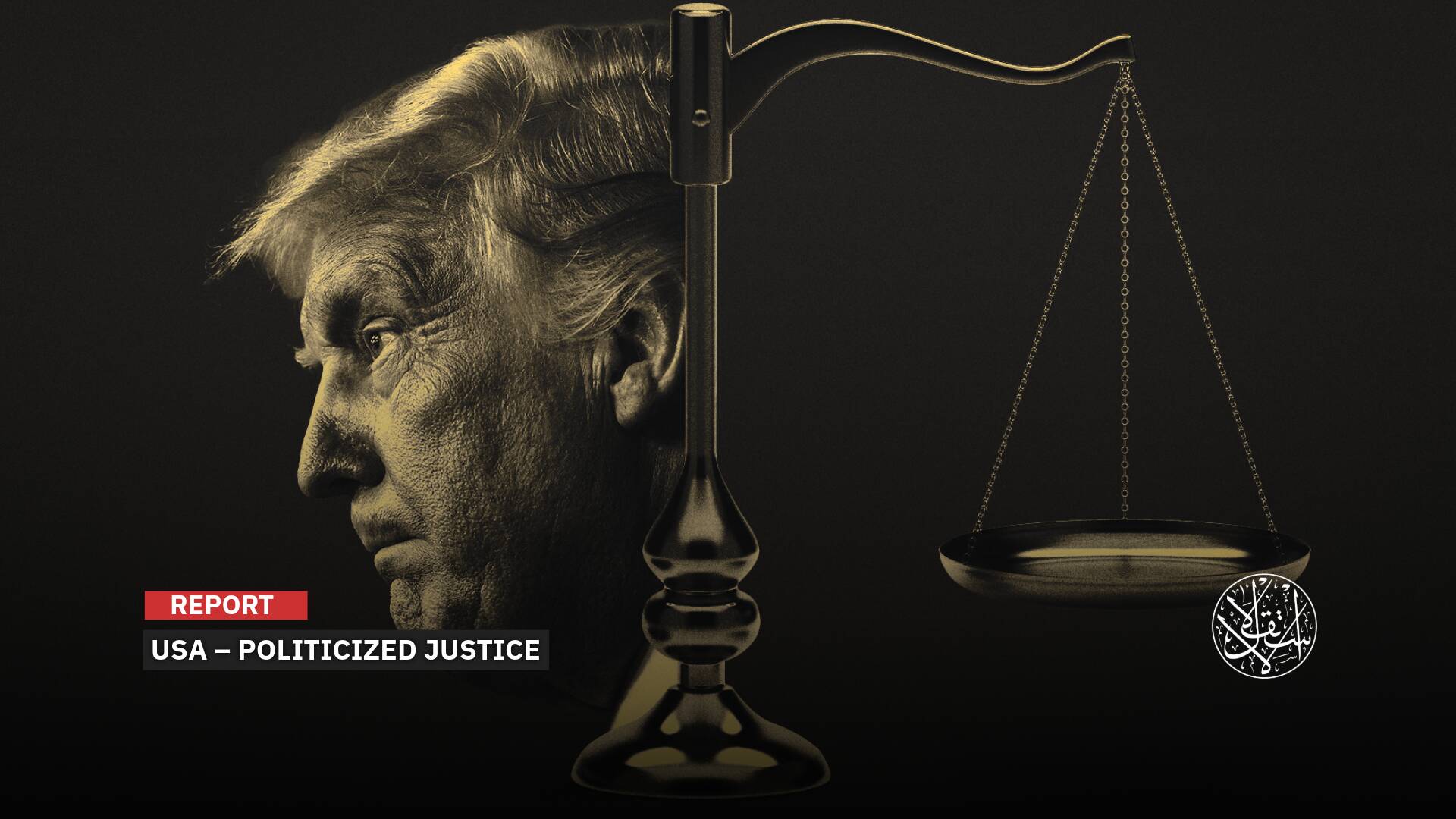Instead of the U.S. Dollar, How Did Some Countries Start Trading Energy for Chinese Yuan?

China sold U.S. bonds worth 250–400 billion dollars, and for the first time since 2010, its investments in U.S. bonds fell from one trillion and 300 billion to 850 billion, and began to move toward investing in gold.
In parallel, there is a very large Chinese expansion to deal with the yuan and local currencies, the latest of which is Kenya, Brazil, Saudi Arabia, Egypt, Iran, and Russia.
Additionally, for the first time, the Chinese Ministry of Defense announced the possibility of strategic cooperation and communication with Russia, meaning the possibility of openly establishing a military defense alliance against NATO.
This does not mean that America is in a weak position. On the contrary, it is militarily surrounding China in the South China Sea, the Pacific Ocean, and important global straits, but it is a game of chess on a global geopolitical level.
Middle East
China is making a bold move to challenge the U.S. dollar’s dominance in global oil trade, by pricing and settling some of its energy imports in its own currency, the yuan.
The first such transactions took place last month when China National Offshore Oil Corporation (CNOOC) and Total Energies completed deals involving about 65,000 tons of liquefied natural gas (LNG) imported from the United Arab Emirates.
The deals were settled in yuan on the Shanghai Petroleum and Natural Gas Exchange, a platform that Chinese President Xi Jinping promoted to Gulf states during his visit to Saudi Arabia in December.
The shift to yuan oil pricing is part of China’s broader strategy to reduce its reliance on the U.S. dollar, which has been the main currency for international oil trade since the 1970s.
China is the world’s largest oil importer and consumer, and it wants to have more control over the prices and supplies of its energy needs.
But China’s move also poses a threat to the U.S. economic system, which benefits from the dollar’s role as the world’s reserve currency.
The dollar’s status allows the U.S. to borrow cheaply, print money without inflationary consequences, and impose sanctions on other countries.
Some experts have warned that if major oil producers like Saudi Arabia follow China’s lead and start selling oil in other currencies, it could trigger a collapse of the U.S. economy and a global disaster.
Monica Crowley, a former adviser to Treasury Secretary Steven Mnuchin, said in 2018 that such a scenario would be “the end of America as we know it.”
Saudi Arabia, which is China’s top oil supplier and a longtime U.S. ally, has not yet embraced yuan oil pricing, but it has signaled its openness to diversify its currency options amid growing U.S. pressure over human rights and oil production levels.
Other countries, such as India and Brazil, are also increasing their use of yuan in their trade with China, while some Asian and Latin American nations are opting for a basket of currencies instead of relying solely on the “strong dollar.”
These trends have raised concerns among U.S. media outlets about the beginning of the end of the dollar era, as China seeks to expand its influence and challenge U.S. hegemony in the world.
Moreover, in an effort to stabilize its national currency, the dinar, the Central Bank of Iraq announced a new set of measures to facilitate foreign trade with China, its largest trading partner.
The bank said in a statement that it would regulate the financing of imports and exports from China directly in the Chinese currency, the yuan, rather than using the U.S. dollar as an intermediary.
The move is expected to boost the balances of Iraqi banks that have accounts with Chinese banks in yuan and reduce the costs and risks of currency conversion.
Iraq, which relies heavily on oil revenues for its budget, is the second-largest producer of crude oil among the members of the Organization of the Petroleum Exporting Countries (OPEC).

Global Trend
In a similar move, Brazil has previously chosen to use the Chinese yuan instead of the U.S. dollar for its trade with China, which amounts to about $150 billion annually.
The move, announced by Brazil’s central bank on March 29, is seen as a challenge to the dollar’s dominance in global trade and a boost to the yuan’s status as a rival currency.
The decision came a day after an Emirati cargo of liquefied natural gas was settled in yuan, another sign of the growing influence of China’s currency in international markets.
It also coincided with Brazil’s closer ties with its BRICS partners (China, Russia, India, and South Africa), which have been seeking to reduce their dependence on the dollar.
The Central Bank of Brazil also revealed that the yuan has become its second-largest reserve currency, surpassing the euro.
By the end of 2022, the yuan accounted for 5.37 percent of Brazil’s foreign exchange reserves, while the euro had 4.74 percent.
Brazil’s shift to the yuan was welcomed by China, which has been promoting its currency as an alternative to the dollar for trade and investment.
China is Brazil’s largest trading partner and a major source of financing for its infrastructure projects.
The U.S. government expressed concern over Brazil’s move, which it said could undermine the stability of the global financial system and hurt American interests.
Since World War II, the U.S. dollar has been the dominant currency for international trade and reserves, giving the U.S. an advantage in economic and political affairs.
Brazil’s move is part of a broader trend of countries diversifying their currency portfolios and seeking more autonomy from the U.S.-led order.
Analysts say that the yuan’s rise as a global currency is inevitable, given China’s economic clout and ambition, but that it will not replace the dollar anytime soon.

The BRICS countries—Brazil, Russia, India, China and South Africa—are considering creating a new international reserve currency based on a basket of their own currencies, according to Russian President Vladimir Putin.
The move is aimed at reducing their reliance on the U.S. dollar, which has been the dominant currency for global trade and reserves for decades.
Putin announced the plan in the summer of 2022, saying that it would help the BRICS countries cope with the “strength of the dollar” and its negative impact on their economies.
The BRICS countries account for about a quarter of the world’s economy, slightly ahead of the European Union.
The proposal faces some challenges, however. One of them is China’s ambition to make its currency, the yuan, the world’s number one trading currency.
China is the world’s second-largest economy and aspires to surpass the United States by 2030. It has also been promoting the use of the yuan in its trade with other countries, especially in Asia and Africa.
Another challenge is the lack of coordination among the BRICS countries on monetary and fiscal policies. The BRICS countries have different levels of economic development, inflation, interest rates and exchange rates.
They also have different political and strategic interests that may affect their willingness to cooperate on a common currency.
The BRICS countries are not the only ones looking to diversify their currency portfolios and seek more autonomy from the U.S.-led order.
The Association of Southeast Asian Nations (ASEAN), which includes 10 emerging economies, is also moving to use local currencies in their intra-regional trade.
ASEAN’s finance ministers and central bank governors met in Indonesia on March 28 to discuss ways to reduce their dependence on the dollar, euro, Japanese yen, and pound sterling in financial transactions.
They agreed to use local currency settlements among Indonesia, Malaysia, Singapore, the Philippines, and Thailand starting from November 2022.
The trend of using local currencies in regional trade could increase pressure on the dollar as a global trading currency.
However, analysts say that the dollar will remain dominant for the foreseeable future, given its liquidity, stability and widespread acceptance.

Real Threat?
As more trade deals around the world are settled in China’s currency, the yuan, some observers wonder if the dollar’s reign as the global reserve currency is in jeopardy. But not everyone is convinced that the yuan poses a serious challenge to the dollar’s dominance.
The yuan is subject to strict controls by China’s central bank, which limits its availability and attractiveness for international investors.
The dollar, on the other hand, is widely used and accepted in global markets, especially for energy transactions.
According to data from 2022, the dollar accounted for 96 percent of global trade, while the yuan barely reached 2 percent.
Paul Krugman, a Nobel laureate economist and columnist for The New York Times, argues that the yuan is not a threat to the dollar.
He says that China would have to radically change its monetary policy and open up its financial system to make the yuan more competitive.
He also downplays the importance of being the global reserve currency, saying that it would not be a big problem if the dollar lost its status.
Some experts disagree with Krugman’s view that the dollar is safe from the yuan’s rise. They point to the risks of the United States’ use of financial sanctions, investment restrictions, and other measures that could alienate its allies and rivals alike.
They argue that these actions could reduce the demand for dollar-denominated assets and encourage alternative currency arrangements.
Nouriel Roubini, an economist who writes for the Financial Times, says that the world is moving toward a “bipolar system in terms of currency” that will eventually undermine the dollar’s privileged position.
He notes that the United States has a persistent current account deficit that raises doubts about its ability to sustain its international commitments.
Mr. Roubini cites the example of China, Russia, and Iran, three countries that have the incentive to avoid U.S. sanctions and the dollar. Together, they have a population of 1.7 billion people.
He also mentions several other countries in the Middle East, Africa, and Asia that may opt for non-dollar trade deals with China or others for political or economic reasons.
This scenario presents a huge potential market for the yuan and a formidable challenge for the United States to defend its interests. It also coincides with China’s growing assertiveness in foreign policy and the emergence of political leaders who seek to balance their relations with Washington and Beijing.
Sources
- A bipolar currency regime will replace the dollar’s exorbitant privilege
- China settles first LNG trade in yuan with UAE deal
- Is China playing long game against dollar in Middle East?
- In shift away from US dollar, Iraq to allow trade with China in yuan
- A major OPEC oil producer moves to adopt the yuan to regulate trade with China













